Meadow Hawkweed (Hieracium caespitosum)
When: Late May – early June
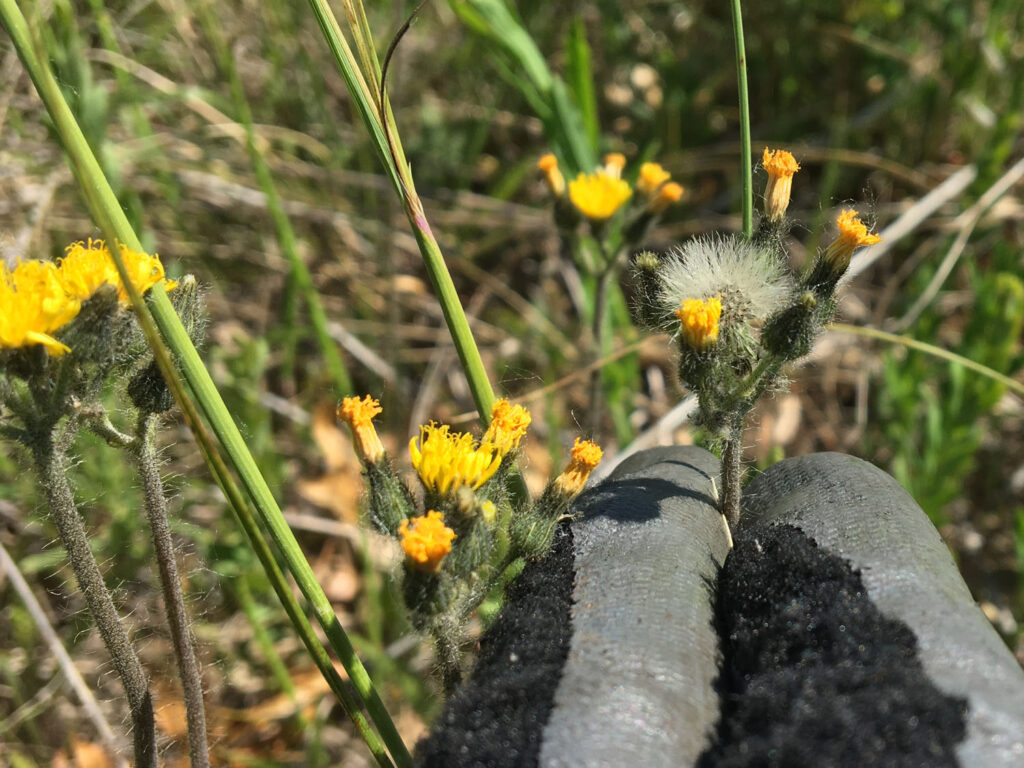
Photo by Eric Howe
Queen Anne’s Lace (Daucus carota)
When: July – September
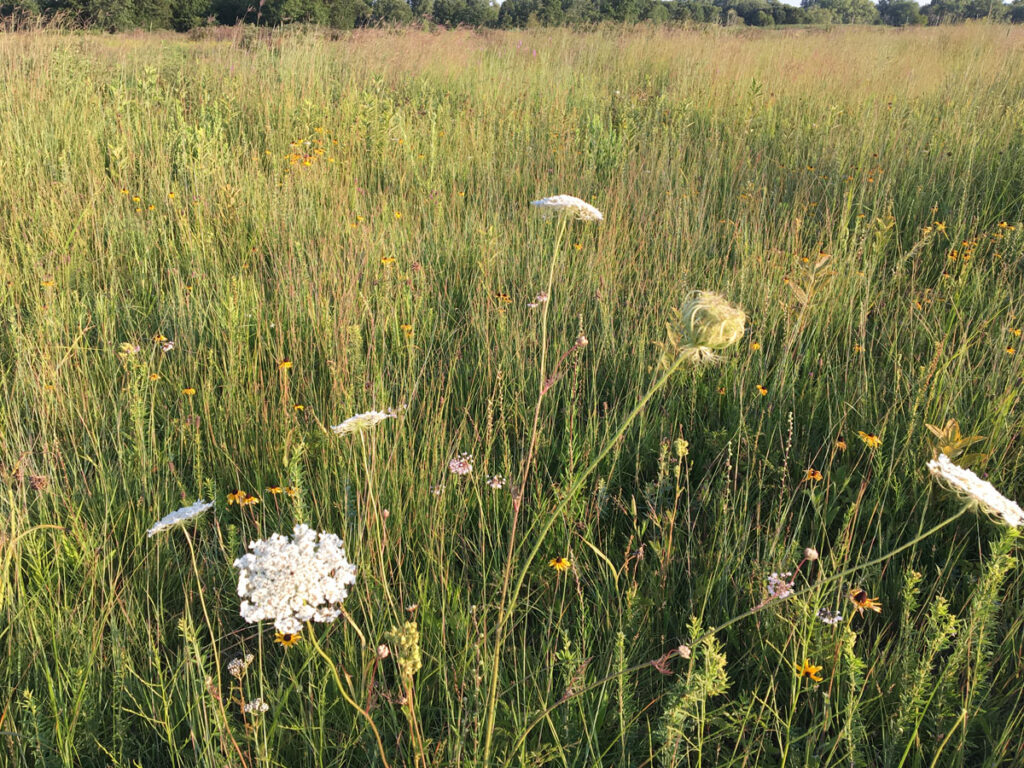
Photo by Eric Howe
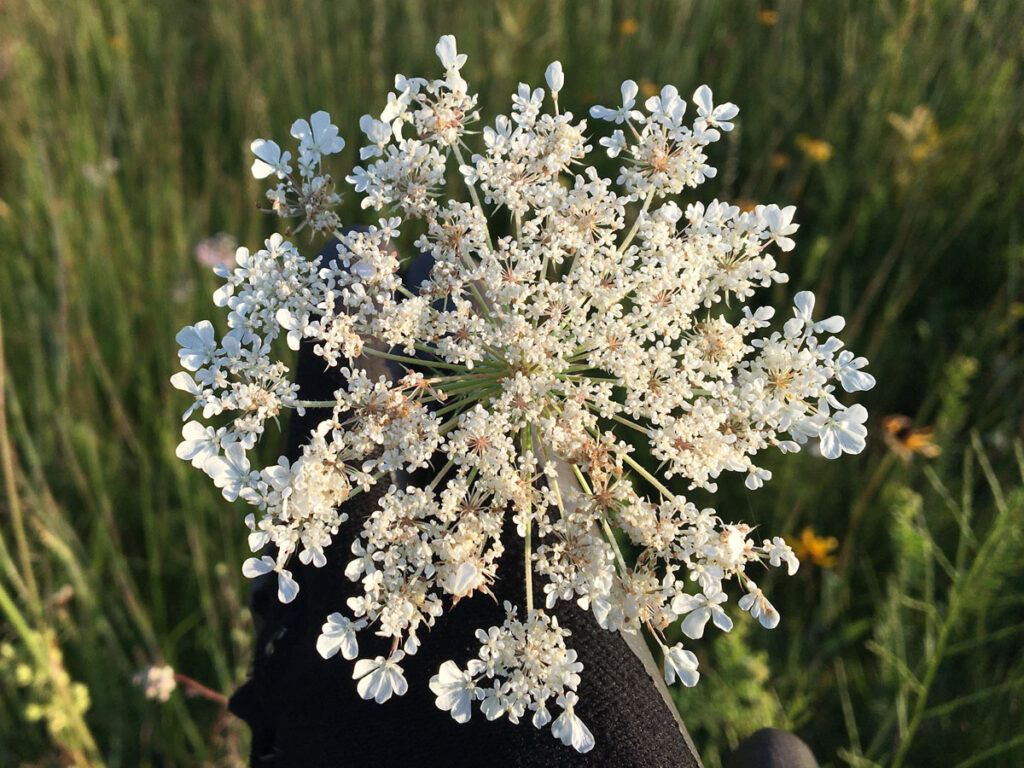
Photo by Eric Howe
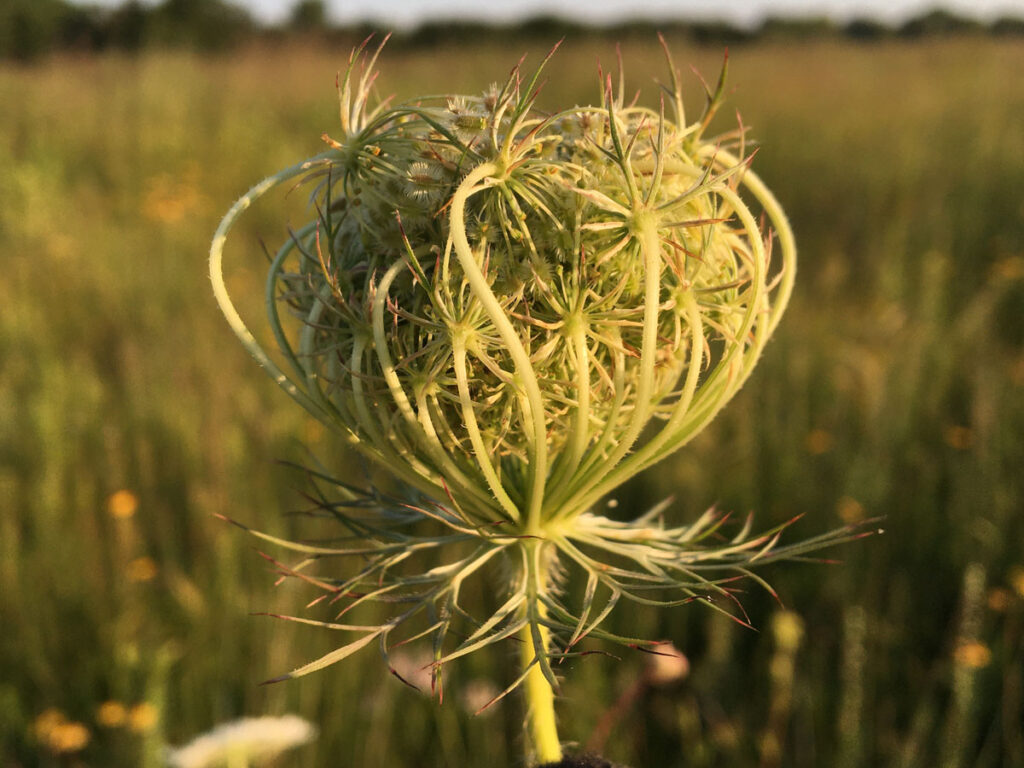
Photo by Eric Howe
Comparison of Queen Anne’s Lace with the native Cowbane
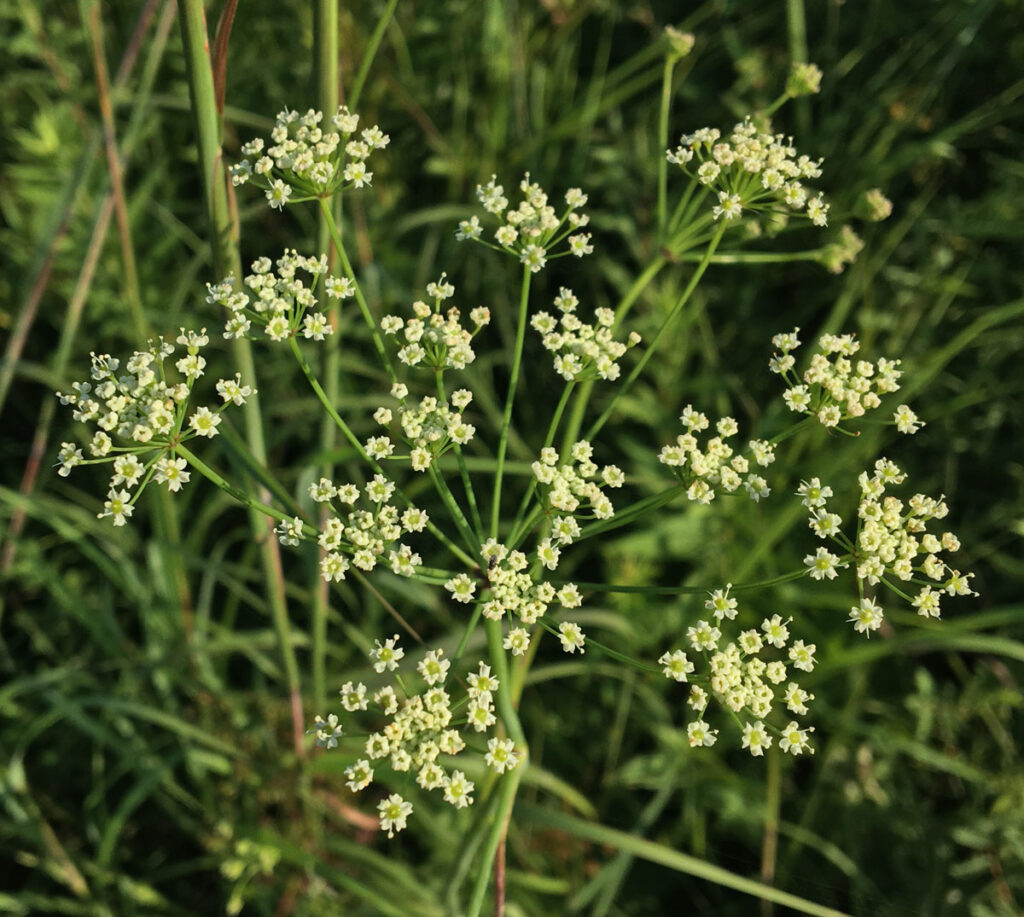
Photo by Eric Howe
White Sweet Clover (Melilotus alba)
When: July-August
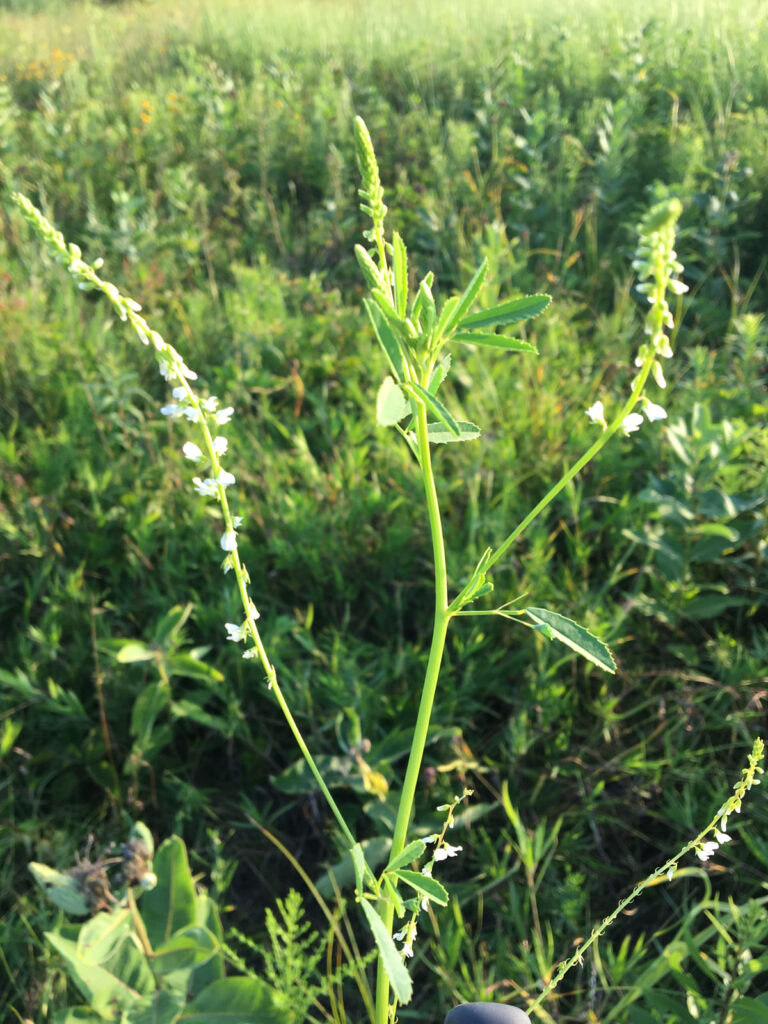
Photo by Eric Howe
Common Mullein (Verbascum thapsus)
When: Late May – early July
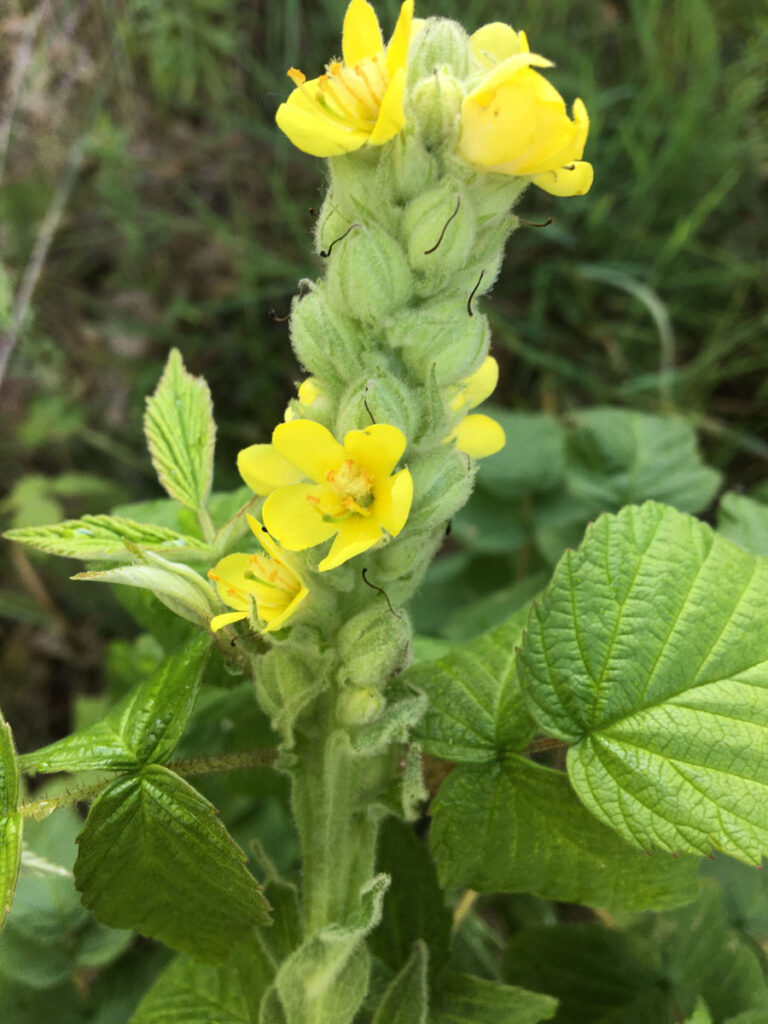
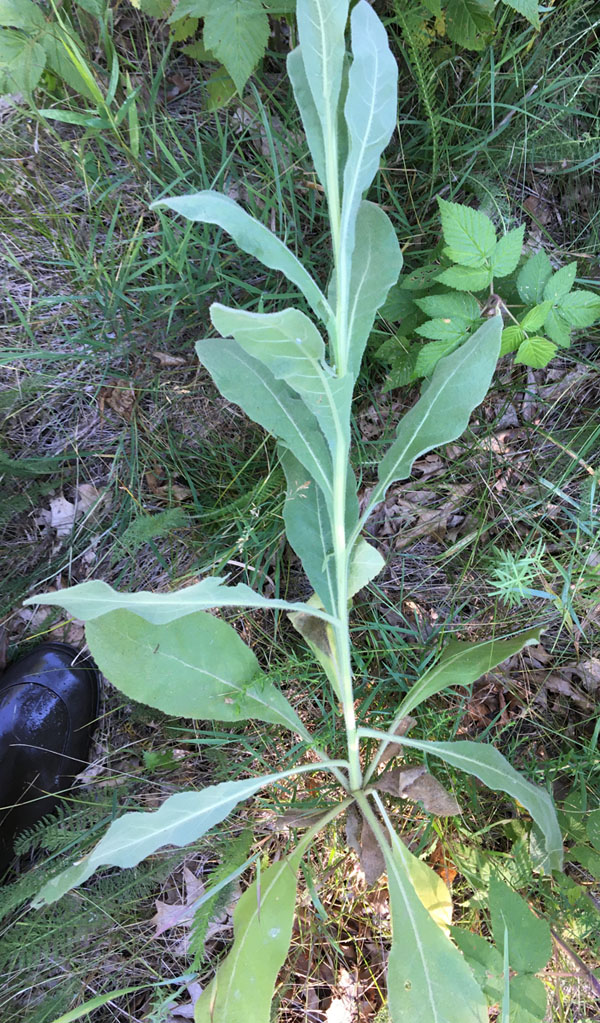
Common St. John’s-Wort (Hypericum perforatum)
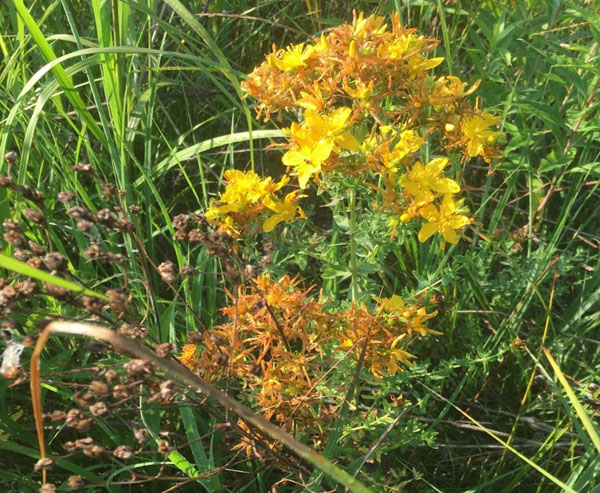
Photo by Pam Holy
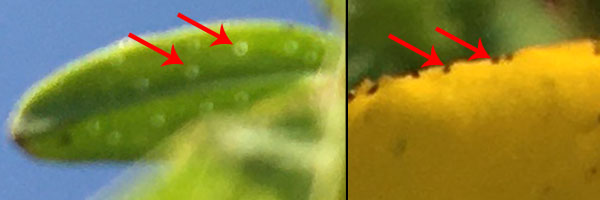
Photo by Eric Howe
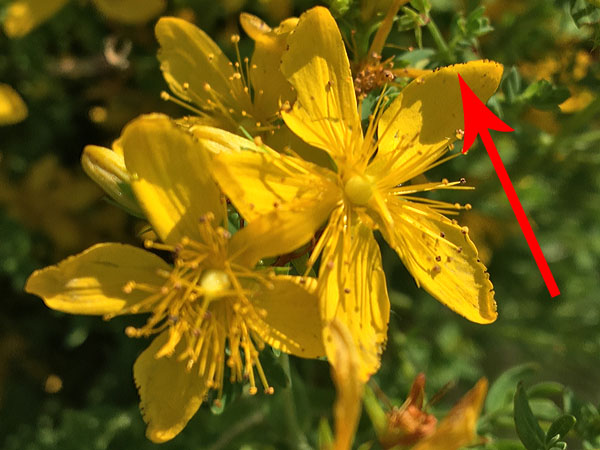
Comparisons of Common St. John’s-Wort with other the native species
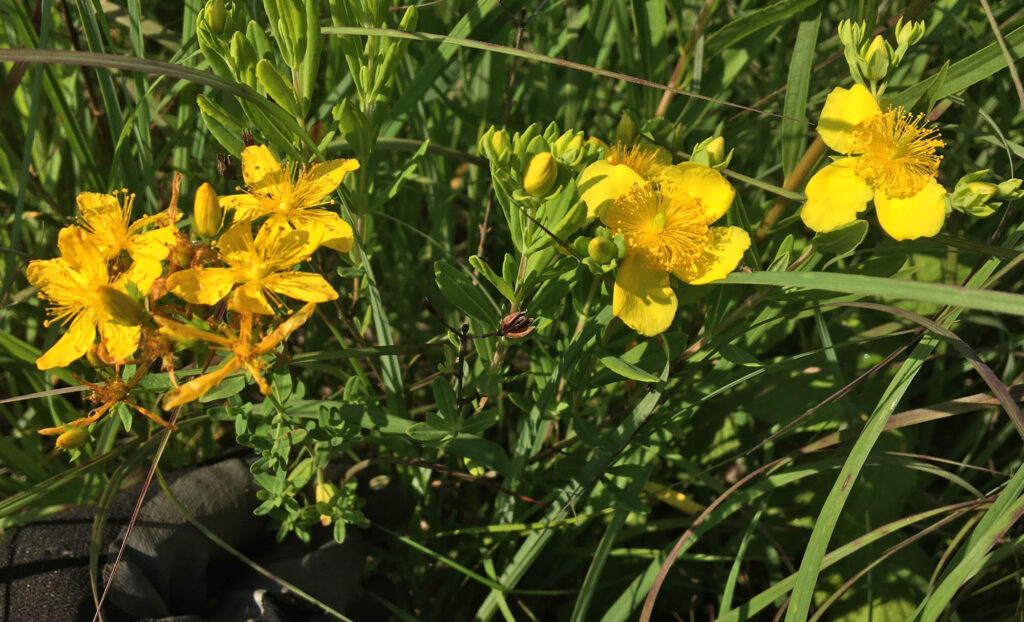
RIGHT: The NATIVE Shrubby St. John’s Wort (Hypericum prolificum). The native lacks the two features noted above and has a profusion of yellow stamens.
Click the above image for greater detail.
Photo by Eric Howe
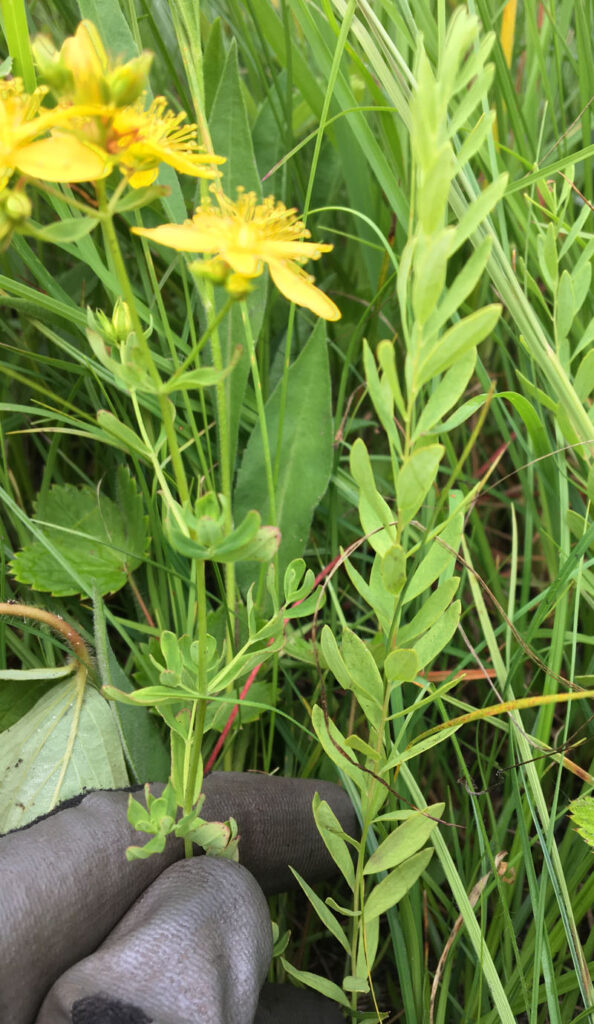
RIGHT: The False Toadflax (Comandra umbellata) for comparison. This native, which may no longer be in bloom when ST. John’s Wort blooms, has alternate leaves versus the opposite leaves of Common St. John’s Wort.
Photo by Eric Howe
Grasp the base of the Common St. John’s Wort stems as low as you can get (where it transitions to the root crown at soil level) and pull slowly as to allow one to get as much of the roots as possible. If one pulls too fast, or if only one of the stems of a multi-stem plant is pulled, the stem(s) is more likely to break off from the root.
